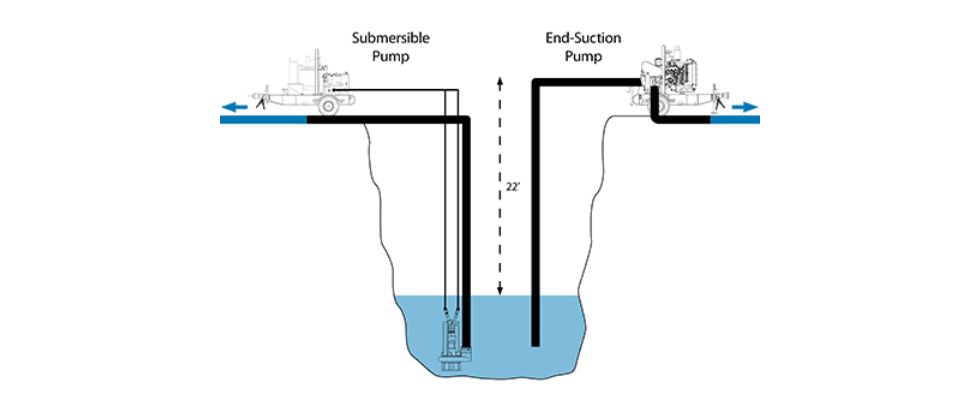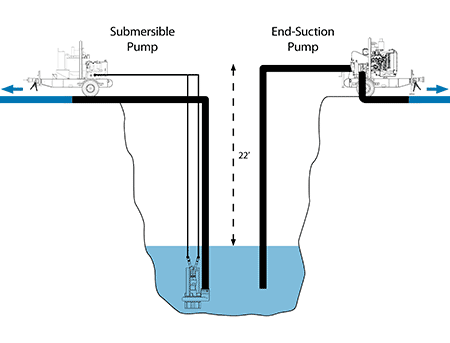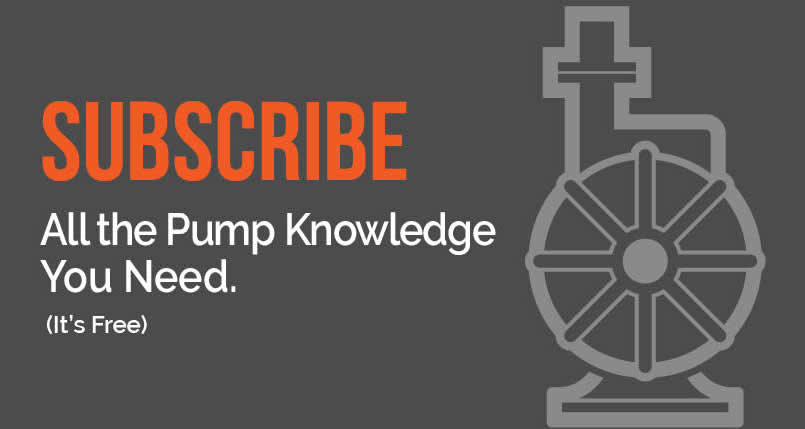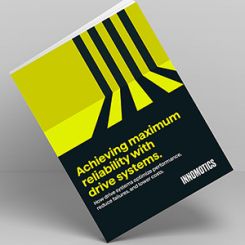
In pumping applications, few factors impact system success more than suction lift—the vertical distance between the water source and the pump. While often underestimated, this variable can determine whether a pump setup runs efficiently or becomes a source of frequent maintenance and operational failure.
Once suction lift approaches or exceeds 22 feet, standard end suction pumps often face limitations. At this threshold, alternative technologies like hydraulic submersible pumps are worth considering.
Understanding Suction Lift
Suction lift measures how far a pump must “pull” water vertically into its intake. At sea level, atmospheric pressure theoretically allows a maximum lift of about 33 feet. However, real-world conditions—friction loss, air leaks, elevation and water temperature—reduce this practical limit to about 20-25 feet.
As suction lift increases beyond 15 feet, pump performance begins to decline. Operators often face problems such as:
- Difficulty priming
- Reduced flow
- Cavitation risks
- Air entrainment
These issues can lead to higher maintenance demands, inefficiencies and potential system failures.

Limitations of End Suction Pumps
End suction pumps are workhorses in construction, agriculture, dewatering and industrial operations. They are relatively simple to maintain, cost-effective and widely available, but they have a built-in constraint: They rely on vacuum pressure to draw water upward through an airtight suction line.
- At a 22-foot lift, this process can become increasingly unreliable:
- Even minor air leaks or pinhole gaps in fittings can prevent priming.
- Friction losses in the suction line reduce lift capacity further.
- The pump operates near its limit, increasing wear and risk of failure.
Running an end suction pump under such stress can result in frequent downtime, overheating and elevated operating costs, making it a potentially poor fit for high-lift environments.
Benefits of Hydraulic Submersible Pumps
Hydraulic submersible pumps take a fundamentally different approach: They push water instead of pulling it.
These systems place the pump directly in the water source, eliminating the suction lift entirely. The pump is powered by a remote hydraulic power unit located safely above the waterline.
With no suction line, priming is not required. The pump uses the surrounding atmospheric pressure to maintain consistent, efficient flow, even in deep or fluctuating water conditions. This makes hydraulic submersibles a good option for:
- Deep excavation and quarry dewatering
- Floodwater management
- Stormwater basin control
- River, lake or canal water transfer
- Sewer bypass in restricted access areas
Handling Solids
Another key advantage of hydraulic submersibles is their ability to handle water laden with debris or solids. Unlike end suction pumps, which rely on suction strainers that can clog or require pretreatment, submersibles draw water directly without excessive filtration.
They are designed to pass larger solids and are less affected by leaves, sticks or sediment—ideal for unpredictable environments such as flood zones or active construction sites.
This debris-handling capability means fewer shutdowns, less risk of clogging and more uninterrupted operation.
Setup & Operational Benefits
Deploying a hydraulic submersible pump is often quicker and more flexible than installing an end suction unit, particularly on sites with limited access or difficult terrain.
Key benefits include:
- Faster deployment: No priming means immediate operation upon startup.
- Reduced footprint: Only the hydraulic lines and small power unit need above-ground space.
- Quieter operation: Power units can be distanced from the water source, reducing noise at the pump head—a benefit in residential or urban areas.
- Improved efficiency: Because they do not struggle against vacuum pressure, hydraulic systems often use fuel more efficiently under load.
That said, hydraulic submersibles require a separate power unit and generally come with higher upfront costs. However, the long-term gains in reliability, reduced downtime and flexibility often outweigh the initial investment, especially in deep-lift or high-risk projects.
When to Stick With End Suction Pumps
For shallow water applications, easily accessible sources or sites where costs must be minimized, end suction pumps remain a practical and economical option. In situations where the suction lift is under 15 feet and water conditions are clean and stable, end suction pumps perform well and can remain in service for years with minimal intervention.
Choosing the Right Pump
The key to successful pump selection lies in matching equipment to site conditions. When suction lift exceeds 20 feet, using a traditional end suction pump can be like trying to climb a mountain with flat-soled shoes—it may work for a while, but not without strain.
Hydraulic submersible pumps have no suction lift limitations, provide greater reliability in fluctuating water levels, have a heightened ability to handle solids and can offer flexible deployment in tough or remote locations. This makes them an excellent option for engineers, contractors and utilities facing deep-lift or hard-to-reach water sources.
Pumping water from 22 feet below the surface is not just a theoretical engineering problem—it is a real-world challenge with serious consequences for performance and reliability. For any project where lift approaches or exceeds 20 feet, it pays for users to make careful decisions regarding their equipment.
For more on submersible pumps, visit pumpsandsystems.com/tags/submersible-pumps.

